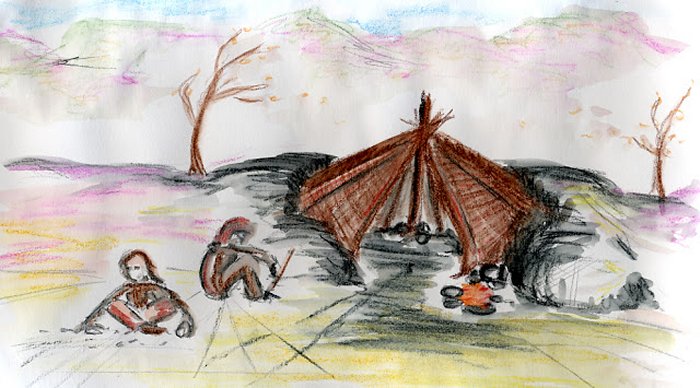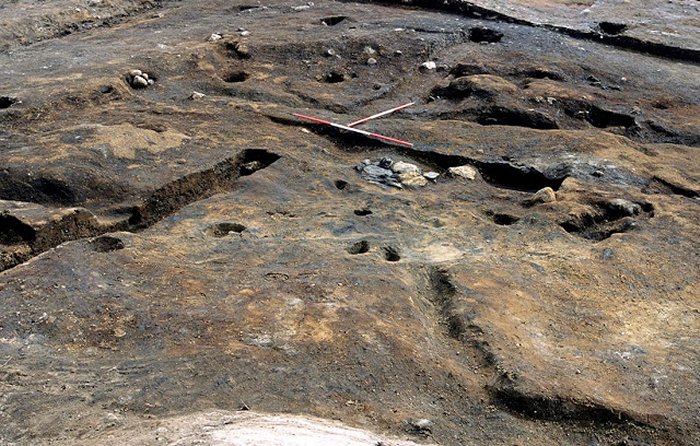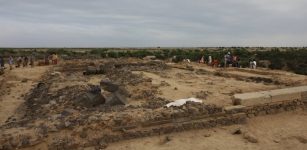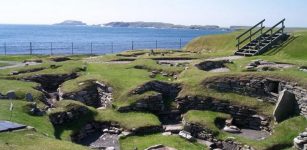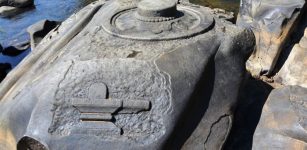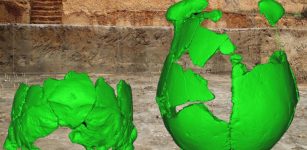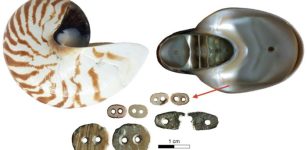Stone Age People Lived In Reused Houses – Not Just Caves – Discovery In Norway Reveals
AncientPages.com - Once again, it’s time to reconsider our understanding of Stone Age people who were much smarter than we think. In schools today, children learn that Stone people lived in caves, but this was not always the case.
A discovery in Norway reveals Stone Age people lived in reused houses for over 1,000 years. This is quite extraordinary considering most modern buildings do not last that long.
Archaeologists have studied 150 Stone Age dwellings, extending from the northernmost county of Finnmark to southern Norway. Sometimes the Stone Age houses stood empty for 40 to 50 years, before being maintained and reused repeatedly.
Artistic impression of a Stone Age pit house. Credit: Astrid Johanne Nyland
During the Mesolithic period in Norway, starting about 9500 B.C, people lived in tents made of animal ski. Later, they created more permanent homes.
Due to weather conditions, the amount of relatively well-preserved Mesolithic dwellings in Norway is unique to Northern Europe.
“In other parts of the world, house remains and traces of people from the Stone Age are buried under today’s farmland, or they’re under water because the land along the coast sank after the last ice age.
In Norway, though, stone-age remains have been preserved because the areas along the coast rebounded from the glacial weight of the last ice age instead. Another reason is that agriculture in Norway has been less extensive, and so it hasn’t covered the traces of the Stone Age.
Photo shows the excavation of a reused Norwegian tent site at Mohalsen in Vega municipality in Nordland county. The site is dated to approximately 8300 BCE. Archaeologist Silje Fretheim is on the right. (Photo: Hein B. Bjerck)
In Finnmark, where cultivated land is the least prevalent, it’s possible to see many traces of the oldest dwellings,” archaeologist Silje Fretheim at NTNU’s Department of Archaeology and Cultural History said.
Finding traces of 11,500-year-old homes is not easy, but based on excavations so far, scientists have determined the first houses were small.
See also:
Why Did Vikings Burn And Bury Their Longhouses?
What Did Houses For Ordinary People In Sumer Look Like?
The floor area of these early dwellings “is almost always between five and ten square metres,” Fretheim said, “which may indicate that nuclear families moved around with portable tents. I think the tents were probably part of the mobile lifestyle ‘package’ that people travelled with.”
The largest pit houses were up to 40 square meters.
“Several families may have lived together, or perhaps hunting teams shared houses,” Fretheim said.
The remains of a Norwegian pit house from the 2003 Ormen-Lange project at Nyhamna, Aukra municipality, in More og Romsdal county in 2003. This pit house was in use for 1100 years between 5200 and 4100 BCE. The picture shows the sunken, rounded floor area with a central, stone-ringed fireplace and holes for posts along the walls
Credit: NTNU University Museum
Instead of building new dwellings in other places, Stone Age people preferred to maintain their houses for over 1000 years.
“Physical objects made by people continue to affect people and landscapes long afterwards. I imagine that the pit sites that were visible in the landscape at the time helped to create the first cultural landscape.
These were the first visible traces left behind, so people recognized those places and chose to rebuild there rather than in new locations. People became more settled and linked to certain sites because they saw them as good places to live,” Fretheim said.
History has shown houses were very important to our ancestors.
To the Vikings for example, their homes were so important that they burned and buried their longhouses.
AncientPages.com
Expand for references
